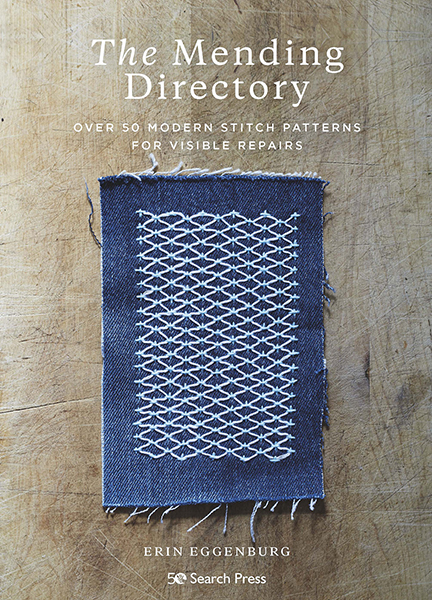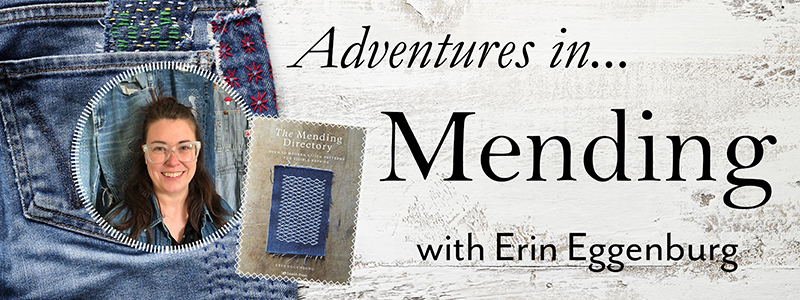
Erin Eggenburg is a visible mending instructor and owner of wrenbirdarts, an online mending shop. Erin also hosts Mending Club, an online forum she created for visible mending enthusiasts, and has a blog that performs in the top 10 per cent of Shopify blogs. The Mending Directory is Erin’s first book with Search Press. We caught up with her to chat about the book, how she got into mending and her top tips for those looking to start mending their own clothes!
Will you tell us a little about your book, The Mending Directory?
I’d love to! The Mending Directory is a book about creating visible mending patterns to patch your textiles. Half of the book is dedicated to embroidered patterns and the second half focuses on darned patterns. It’s really instruction heavy, so that a novice can re-create the patterns, but it also includes suggestions for pattern variation, and three difficulty levels to appeal to those with more stitching experience. There are pictures, and diagrams that go along with the written instructions, it’s a really hands-on book, and that’s what I like best!
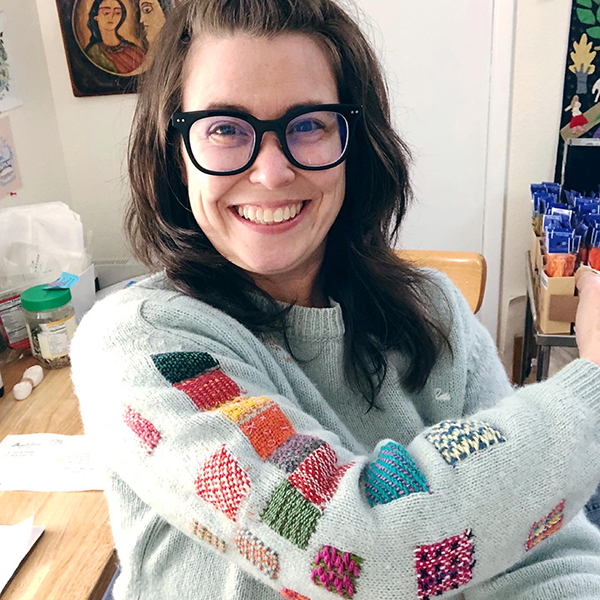
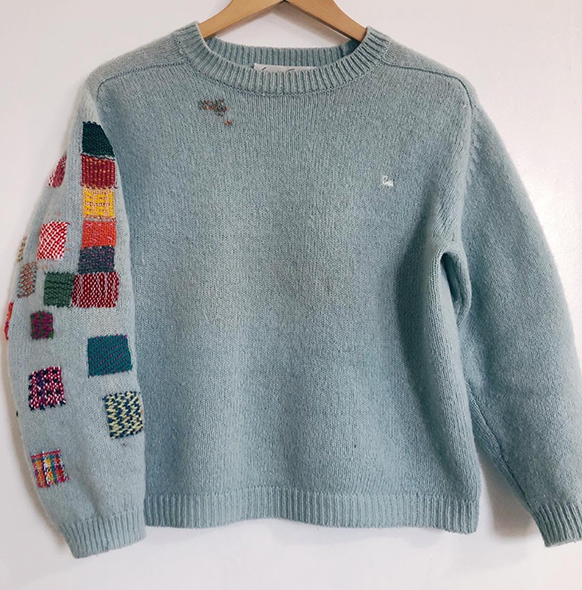
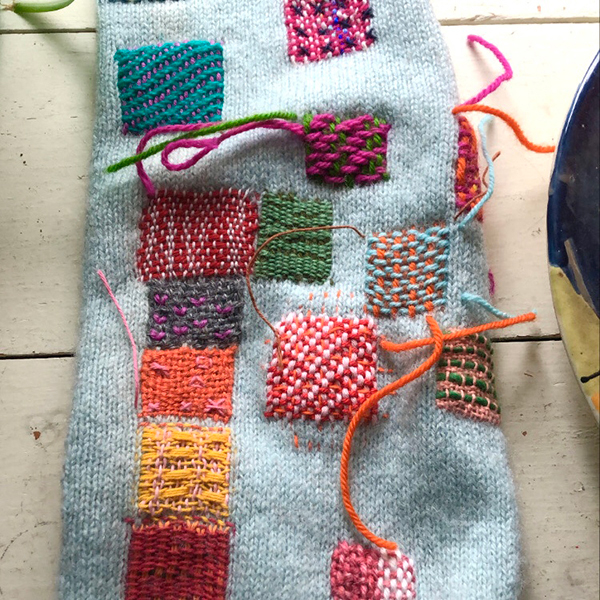
Have you always mended your clothing?
No, quite the opposite. I am a child of the 80s, and like so many others, my experience was unfortunately a lot of fast fashion. I learned about fast fashion and mending, after I started working for a sustainability focused non-profit in 2017. I learned so much about the implications of fast fashion that I really made the commitment to pivot my own consumption. I was an already an avid embroiderer, so the jump from embroidering hoop art to clothing was a relatively easy one for me. And that opened me up to a whole new world called Visible Mending.
What’s your favourite thing about mending?
Being able to preserve those favourite pieces of clothing. I love the feeling of putting on my favourite pair of jeans, they are comfortable, like an old friend. Those mended patches become part of the story of the jeans.
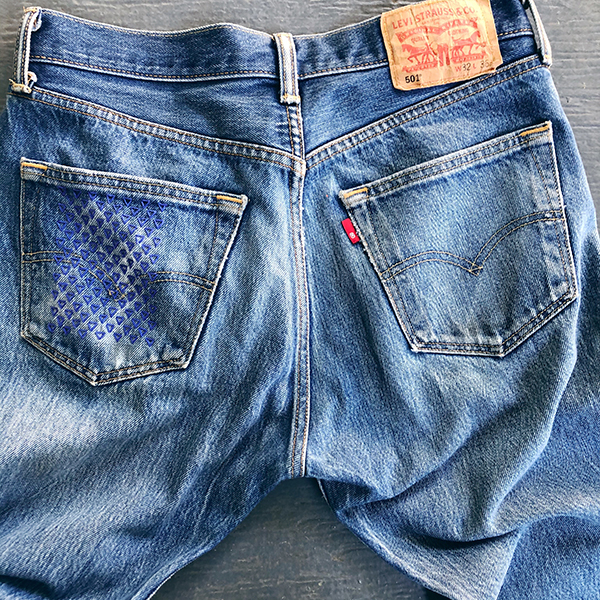

What are your favourite embroidered and darning patterns featured in the book? Why do they appeal to you?
That’s a tough one! My favourite embroidery pattern in the book is ‘Circles and Dashes’. It reminds me of a stained-glass window, and the texture is simply delightful to look at and feel the bumpy surface of the circles. It’s stitched in three layers and is one of the more complex patterns included in the book.
And my favourite darning pattern must be the ‘Central Stripe’ pattern. It’s a darn on top of a darn in two different directions, and I just love the way it looks.
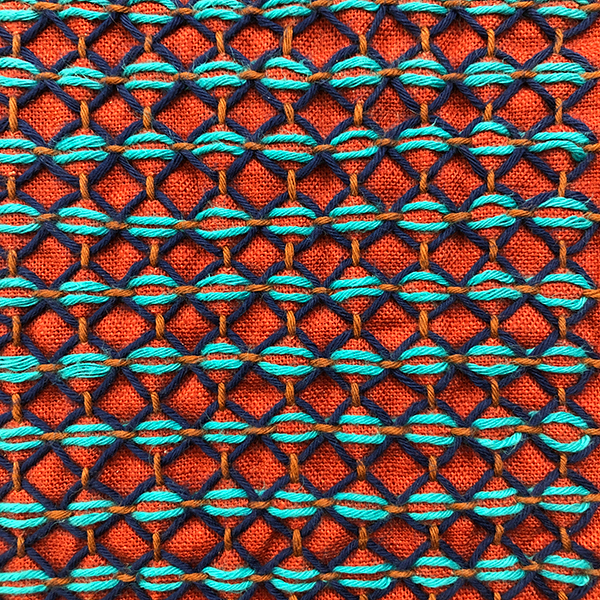
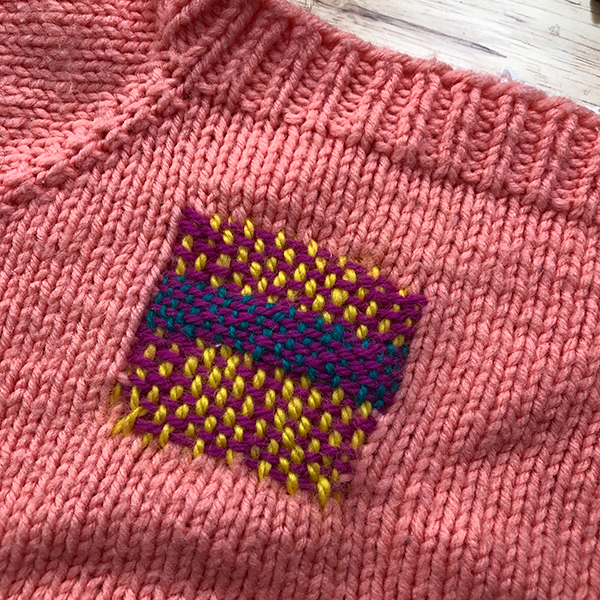
Circles and Dashes Central Stripes
What’s your advice for a beginning mender?
Don’t expect perfection. It’s not as common to grow up mending these days, and it’s just harder to learn as an adult, so be gentle with yourself. Mending techniques are simple, but even learning simple stitching takes practice. Start with a small patch or darn, and then work a couple more of those little mends. I always suggest starting with something that isn’t your favourite.
What are your go to tools of the trade? What should a beginner never be without!
Unsurprisingly, I’m a big fan of both colour and texture, so I think growing a thread collection is of utmost importance. Beginning stitchers should always keep an eye out and add new colours of thread and yarn and explore the use of different fibre contents like wool, cotton, linen, and blends. I think experimenting with different thread content is the best way to learn how different thread behaves when you stitch or weave with it and might just spark and unexpected colour or texture combination.
More practically, using the correct needle is maybe the most important. Needles can be long or short, sharp, or dull, thick or thin, and even the size of the eye of the needle has a function. Most needles are named by the type of hand sewing they are suited for, so thankfully, choosing the correct needle isn’t too much of a mystery.
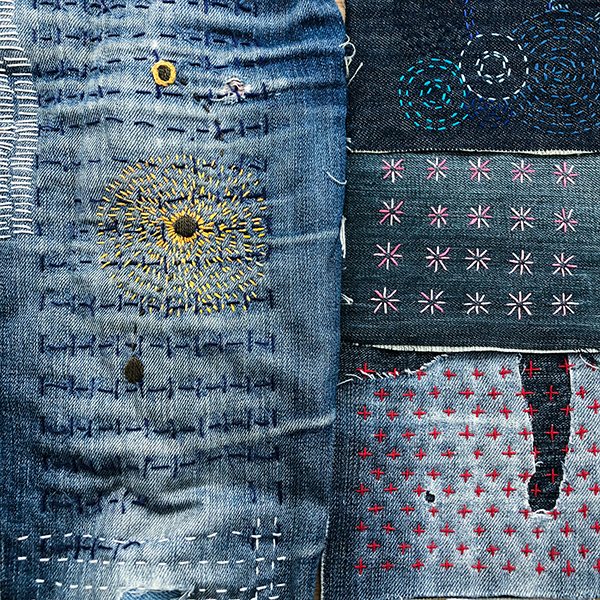
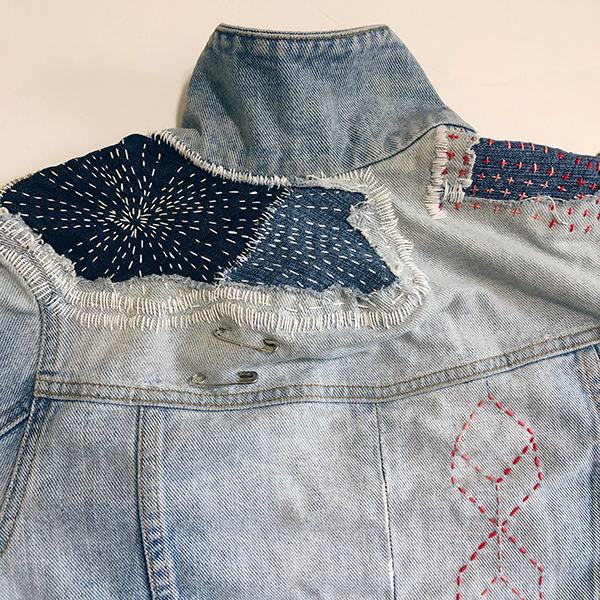
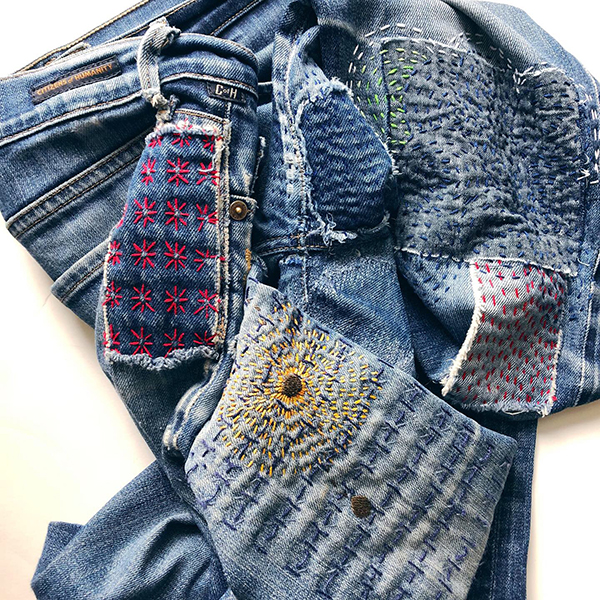
What are you working on right now?
I always have a few projects going on, but now that the weather is getting cooler, I’m really excited to get back into a few denim projects. Also, I recently paid a visit to my dad, and came back with a pile of his holey socks to darn.
Where can we keep up with you?
I share mending tips and projects regularly on social media. You can find me on Instagram @wrenbirdmends and Facebook @wrenbirdarts. You can visit my shop and blog at www.wrenbirdarts.com
The Mending Directory is available from Search Press, RRP £15.99.
